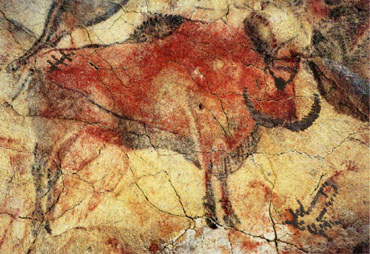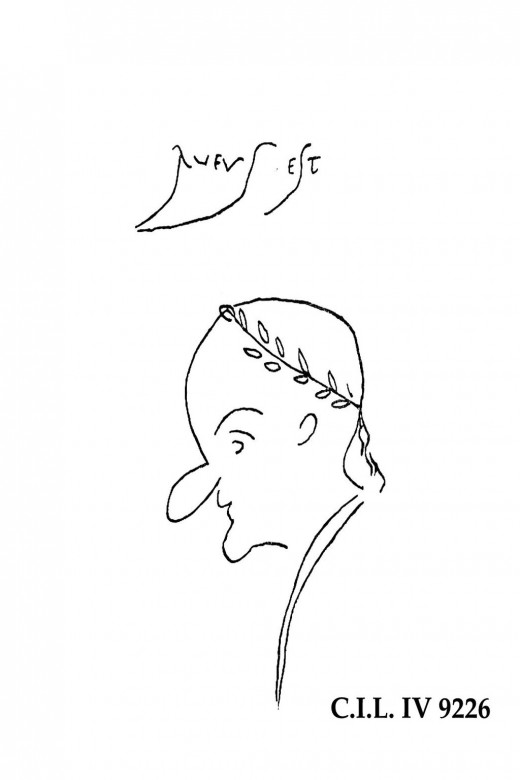The First Graffiti
From The Dаwn of Human Race
Today every bigger city has its graffiti art on the buildings, bridges and any kinds of walls. Some graffiti are like an art while others are just scribbles, writings and curses. From the most modern metropolis to the poorest suburb we can see walls covered with graffiti but have you ever wondered where they came from? Who invented the first graffiti and in which city?
Where did graffiti come from?
The term Graffiti comes from the ancient Greek verb “graphein” – to write and represent scratches, drawings, scribbles and paintings on different hard surfaces such as rocks, stones, or building walls. Today, we have ended up talking about modern graffiti art, but although its beginnings can be traced to the late 1960s in the United States, the history of graffiti appears to go much further back in time – beyond even ancient times.
Remote Past
As first demonstrations of graffiti are usually thought the cave pictures found in the Chauvet-Pont-d'Arc Cave in the Ardèche department of southern France, as well as those in the caves of Arcy-sur-Cure (including the famous Grotte du Renne) in the Yonne department in Burgundy in north-central France and the Lascaux Cave in Dordogne River Valley. They dated from the “Old Stone Age” period of the human history (from around 17, 000 years ago) and there is still no answer on what they have represented - a documentation of important events, such as hunts and wars or a way of spending time of inactivity by some members of the human population back then.

Ancient Times
There are Egyptologists who specialize in studying ancient graffiti, scrutinizing every piece of information they can get from them. And this is not a shoot in the dark because, in ancient Egypt, graffiti have been left in many and various places. Some were even found in spots they haven’t been quite expected – on ceremonial palaces or royal buildings, for instance. One such example is the Palace of Merneptah in the city of Memphis, excavated from Penn Museum archaeologist Clarence Fisher between 1915-1923. On two parts of the gateway jambs, there are registered two examples of ancient graffiti, etched in the palace doors thousand years ago. One is in a form of a small fish, and the other depicts a seated woman with a child on her lap.
Many others graffiti have been hammered, scratched, incised or ink-drawn on various natural sites and public places in ancient Egypt. The last several years this otherwise under-studied field has gained supporters among the scholars and the work on it promises interesting results.
The American School of Classical Studies at Athens has found and researched a big deal of the graffiti left in ancient Greece. In 1976, the scientist Mabel Lang catalogued around eight hundred and fifty of them. The gamut of graffiti in her collection is really impressive. There are dedications, messages, insults, marks of ownership, commercial notations, lists, pictures, but also kalos inscriptions, abecedaria, and Christian inscriptions. The range of their dating is also remarkably large - from the eighth century BC through to the late Roman period.
The first known example of "modern style" graffiti also comes from the ancient Greece - from the ancient Greek city of Ephesus (today in modern Turkey). The graffito was found near a stone walkway and represents a handprint resembling of a heart with a footprint and a number next to it. It has been suggested that was a prostitution advertisement indicating the direction to a brothel and reminding for the payment needed for that service.
The ancient Romans also carved graffiti on walls and monuments and some of them could be seen even in the provincial territories, such as Egypt and the Middle East.
The most intriguing, probably, were discovered during the excavations of the ancient Roman city of Pompeii – buried in the ashes of the Mount Vesuvius’ lava that came over in the first century AD. As archeologists have revealed, the streets of Pompeii were full of drawings and inscriptions (around 11, 000 in a town of 11, 000 citizens) and what is really surprising - they existed not only on inns, bars, public baths and basilicas but also on the walls of the wealthy private houses. Among them, there were political appeals, declarations of love, caricatures, boasts, insults, curses, and even riddles and word squares.
There were, of course, other examples of graffiti in the ancient world. The Maya site of Tikal in Guatemala contained examples of ancient Maya graffiti. Viking graffiti survived in Rome and at Newgrange Mound in Ireland. In Sri Lanka, at the fifth-century citadel of Sigiriya, there were left over one thousand and eight hundred graffiti on the Mirror Wall.

Modern Times
The modern time graffiti include the names of the Napoleon’s soldiers carved on different monuments during his campaign in Egypt in the 1790s.
One curious graffito is written by the very hands of the famous Lord Byron on one of the columns of the Temple of Poseidon at Cape Sounion in Greece.
Some graffiti date from the period of the World Wars. An inscription on a wall at the fortress of Verdun illustrates the US involving in these wars by representing the following:
Austin White – Chicago, Ill – 1918
Austin White – Chicago, Ill – 1945
This is the last time I want to write my name here
The widespread phrase “Kilroy was here” accompanied by the characteristic image of a bald man peeping out of a wall dates from the time of the World War II. Probably, it was initially drawn by an American soldier and later entered the American popular culture.
The contemporary image of graffiti has appeared in the United States’ city of Philadelphia in the early 1960s and by late sixties, they have reached New York. Graffiti as a new art form started to flourish in the 1970s where mass writing of names or “tags” was registered on walls and building all over the city.
There is still going on debate whether graffiti could be considered as art or as an act of vandalism.









